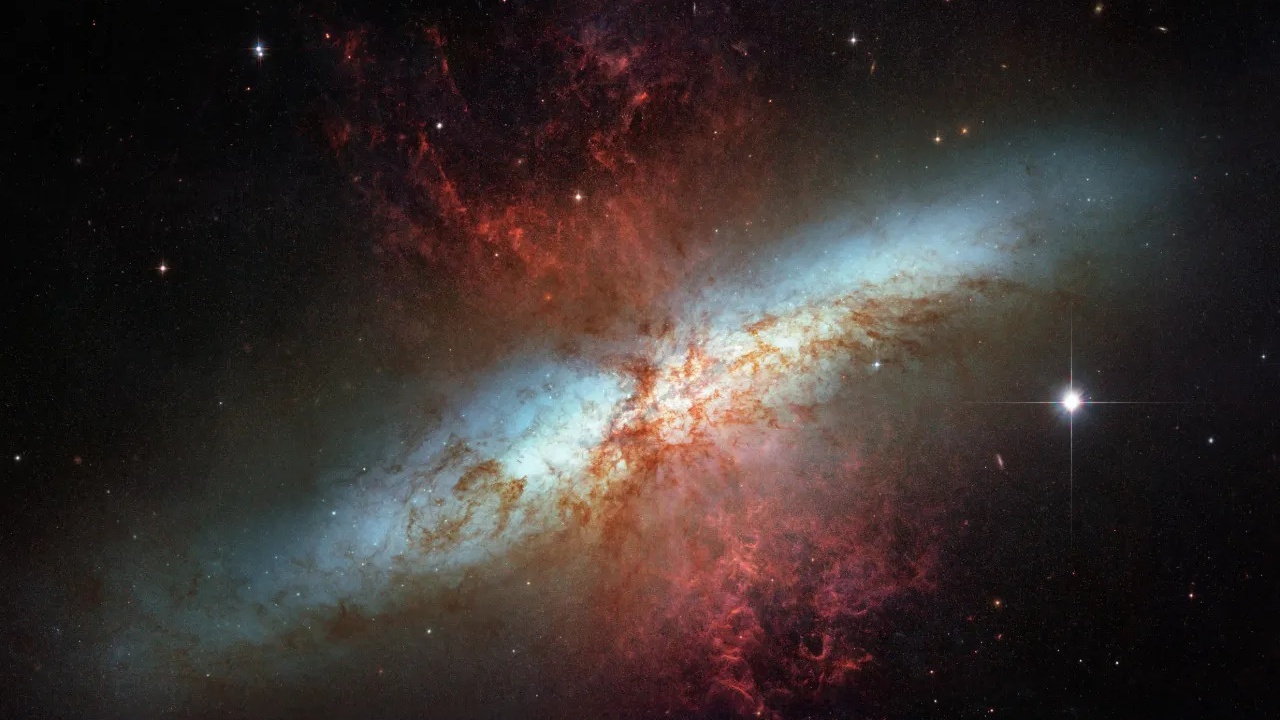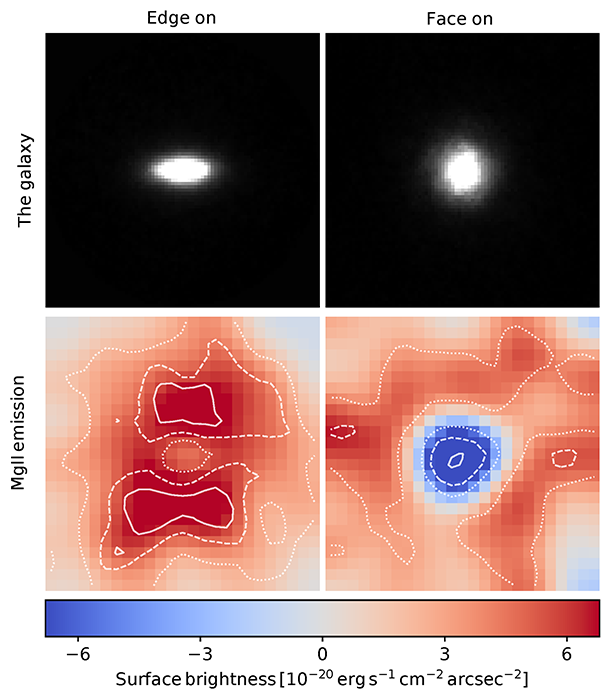Over 100 galaxies seen spewing powerful winds that can halt star formation
Exploding stars in normal galaxies have been caught contributing to a wind of radiation that can shut down further star formation.

Powerful winds that can heat and even drive away a galaxy's gas — like a snow-plow separating fallen snow — have been observed spewing from over a hundred normal galaxies while changing the course of their evolution.
So-called galactic winds have been observed before, emanating from quasars, or "starburst" galaxies that are forming huge amounts of stars in a frenzy. One classic example is the starbursting Cigar Galaxy (Messier 82) in the constellation of Ursa Major, which can clearly be seen blowing huge filaments of gas out of its core. The winds can come from the radiation of many hot, massive stars, and are bolstered by the blast waves theses stars' deaths when they explode as supernovas. The winds are made up of a torrent of charged particles, plus hot and cold gas dragged along for the ride.
These galactic winds blow for tens of thousands of light years, and can heat and drive-off gas in a galaxy that would otherwise be used for further star formation. Astronomers refer to this kind of process as "feedback" — once star formation gets too intense, it is able to essentially shut itself off via the winds.
However, until now, galactic winds had not been observed in calmer, "normal," galaxies. The winds in these galaxies are much more diffuse and have lower densities than in starburst galaxies, which makes them difficult to identify.
Related: James Webb Space Telescope sees early galaxies defying 'cosmic rulebook' of star formation

A team led by Yucheng Guo of the University of Lyon in France, however, set out to find these winds in normal galaxies. They observed over 100 large, normal galaxies out to a distance of about 7 billion light years with MUSE, the Multi-Unit Spectroscopic Explorer on the Very Large Telescope at the European Southern Observatory in Chile.
Because the winds are so hard to detect, Guo's team used strong emissions associated with magnesium atoms as a proxy. Magnesium is formed by supernova explosions and is carried away by the gusts of galactic wind, allowing astronomers to use it to track the wind. The observations showed that each of the galaxies in the observed sample had a galactic wind in the form of two cone-shaped bipolar outflows extending above and below each galaxy for up to 30,000 light-years.
Breaking space news, the latest updates on rocket launches, skywatching events and more!
The findings show that feedback from galactic winds operates in all normal large galaxies, including the Milky Way. In doing so, they are able to exert some control over the rate of star formation in those galaxies. This is because clouds of molecular hydrogen gas need to be exceptionally cold, less than 10 degrees above absolute zero, to begin the gravitational collapse necessary for forming stars. The galactic wind is able to plow through these gas clouds, heating them beyond their ability to form stars and, if powerful enough, even blow the gas away.
The findings were published on Dec. 6 in the journal Nature.

Keith Cooper is a freelance science journalist and editor in the United Kingdom, and has a degree in physics and astrophysics from the University of Manchester. He's the author of "The Contact Paradox: Challenging Our Assumptions in the Search for Extraterrestrial Intelligence" (Bloomsbury Sigma, 2020) and has written articles on astronomy, space, physics and astrobiology for a multitude of magazines and websites.
